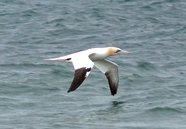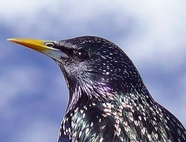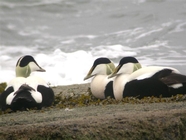The Colour of Birds



The depth of winter is brightened by the colour of birds.
There are two ways in which the colour of birds is produced. The first way is through chemical compounds in the feathers or skin. The second way is through the structure of the feathers themselves. These structures produce the vivid blues in Kingfisher and the iridescent sheen on Starlings.
What is the purpose of colour in birds? Here are a few examples.
The most spectacular colours typically function to impress members of the same species, to see off rivals and to attract the opposite sex. The male Eiders round our coast in their breeding plumage are a good example of this. On the other hand, the nondemonstrative colours of the female Eider help to avoid predation by camouflaging her while she is on its nest.
"Disruptive" coloration -- the use of striking patterns to break up the outline of the bird -- is another technique for avoiding detection. Ringed Plover, for example, is difficult to see in some circumstances. The extreme in cryptic coloration, of course, is found among those birds that take on the colour of the background in which they live. Ptarmigan in their winter plumage is a classic example.
Many inconspicuous birds exhibit what is known as "countershading"; they are darkest along the back, and gradually become lighter until the belly is pure white. Countershading tends to eliminate a sharply defined shadow. A lot of shorebirds have countershading.
Birds often use colours to identify themselves to other members of their flock and thus to hold it together. Examples are the colour patterns revealed in flight by shorebirds such as Turnstones and Redshanks. Colours in the gapes of chicks stimulate parental feeding. In addition the red spot on the bill of the Herring Gull encourages the young to solicit food and to stick its head into the adult's mouth.




Finally some colours are apparently produced incidentally by pigments deposited for other reasons. For instance, feathers of the wingtips are subjected to more wear than those nearer the base of the wing. And feathers containing pigments are more resistant to wear than those without. That is thought to be the reason why the wingtips of many mostly white birds, such as many gulls and gannets, are dark.